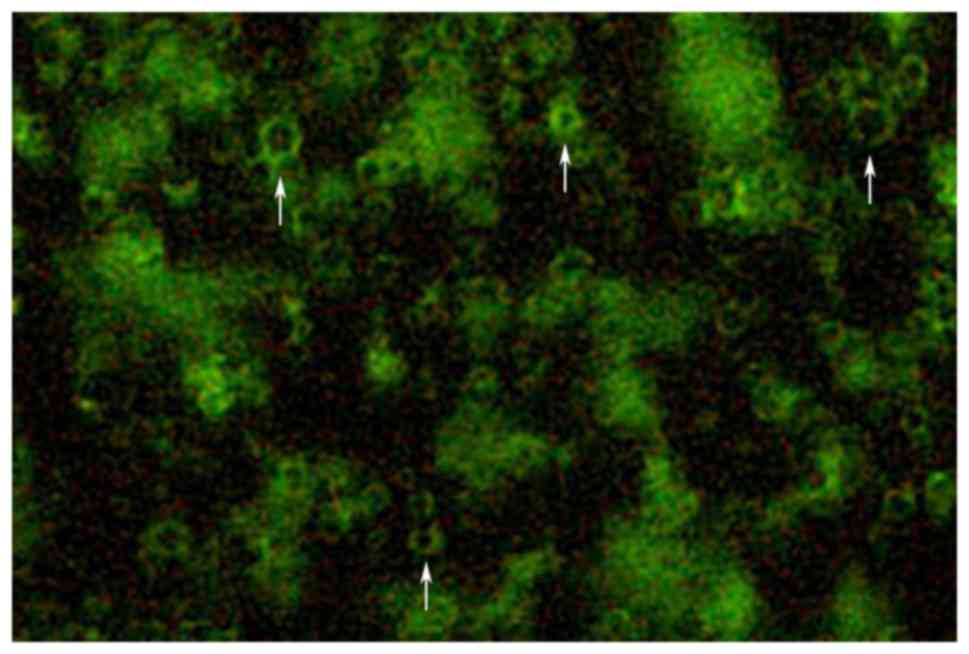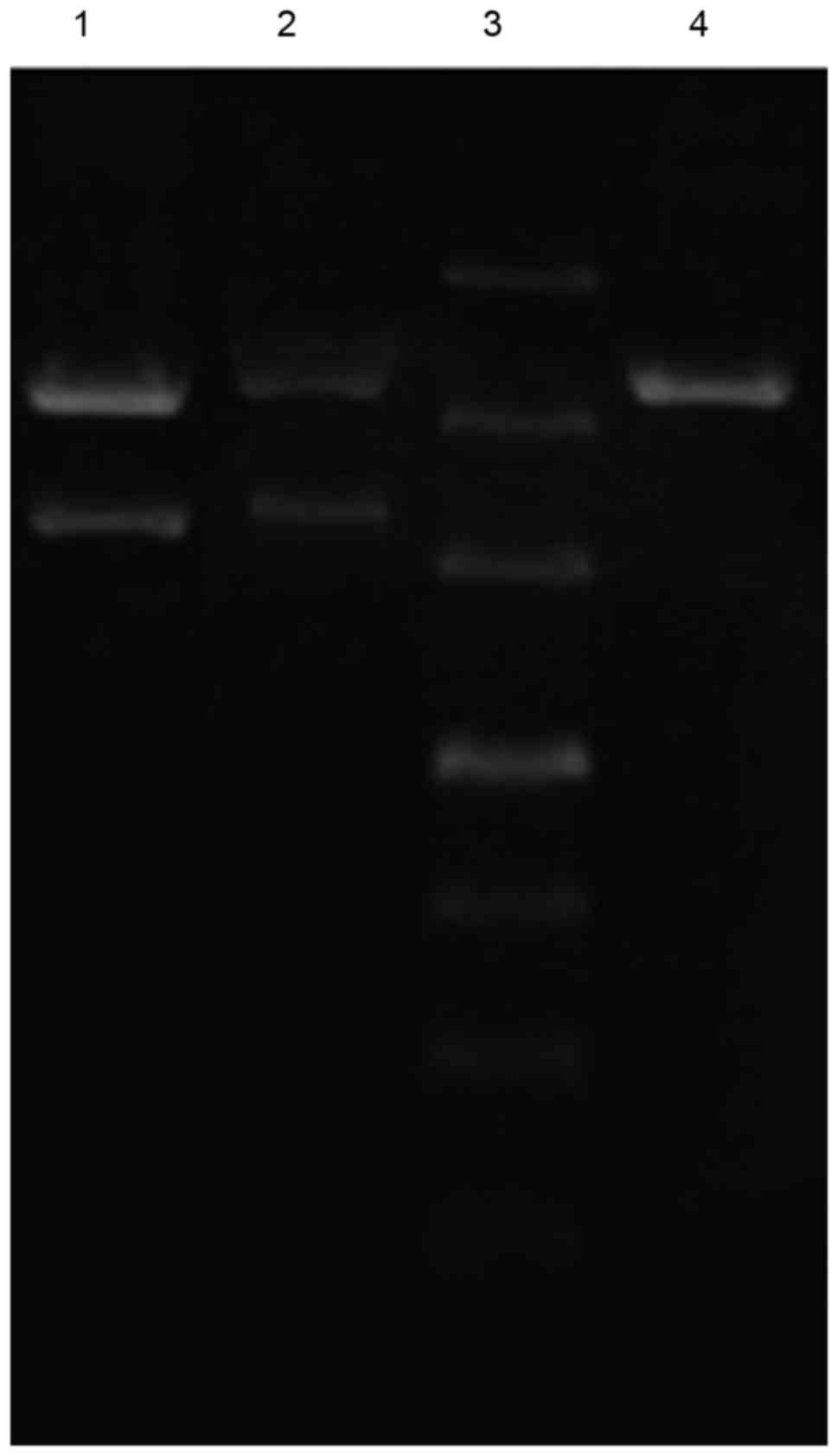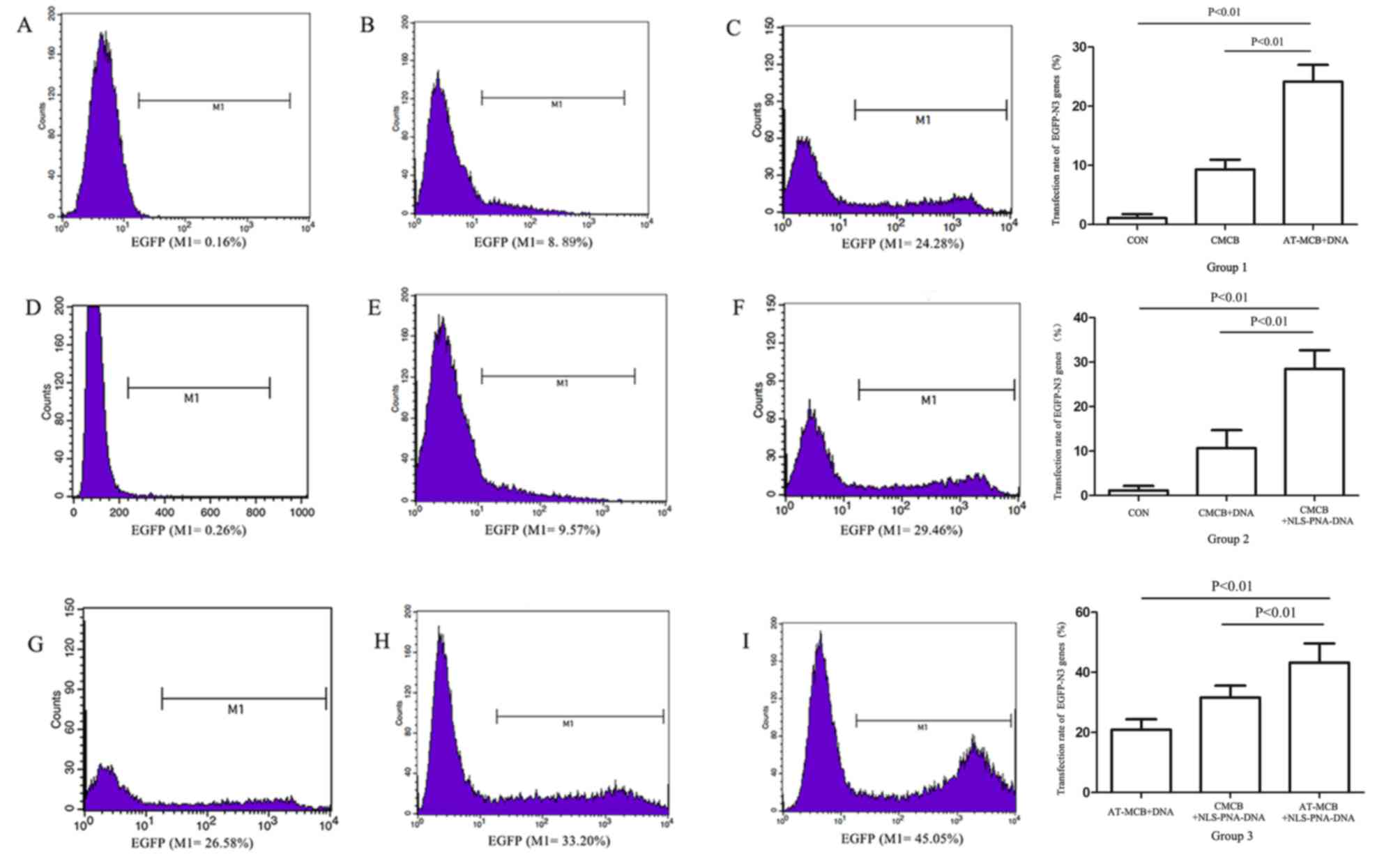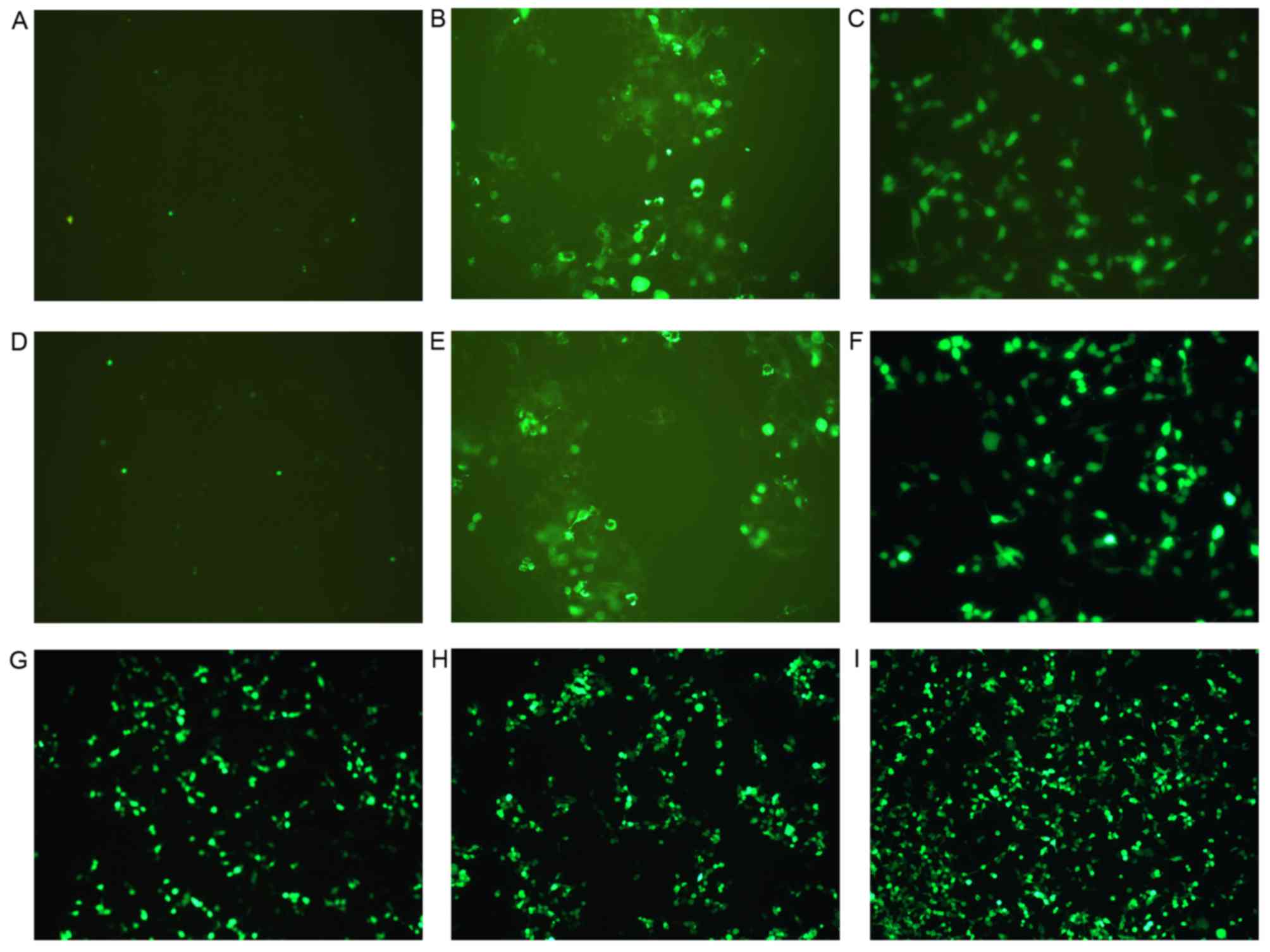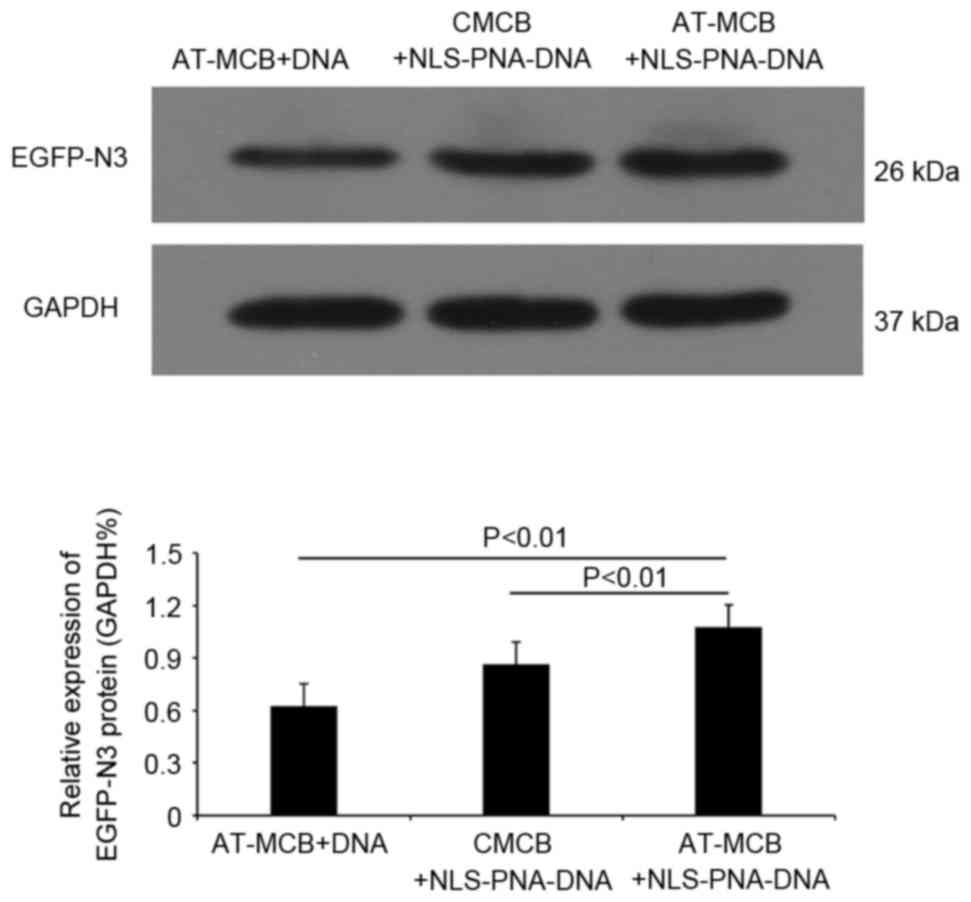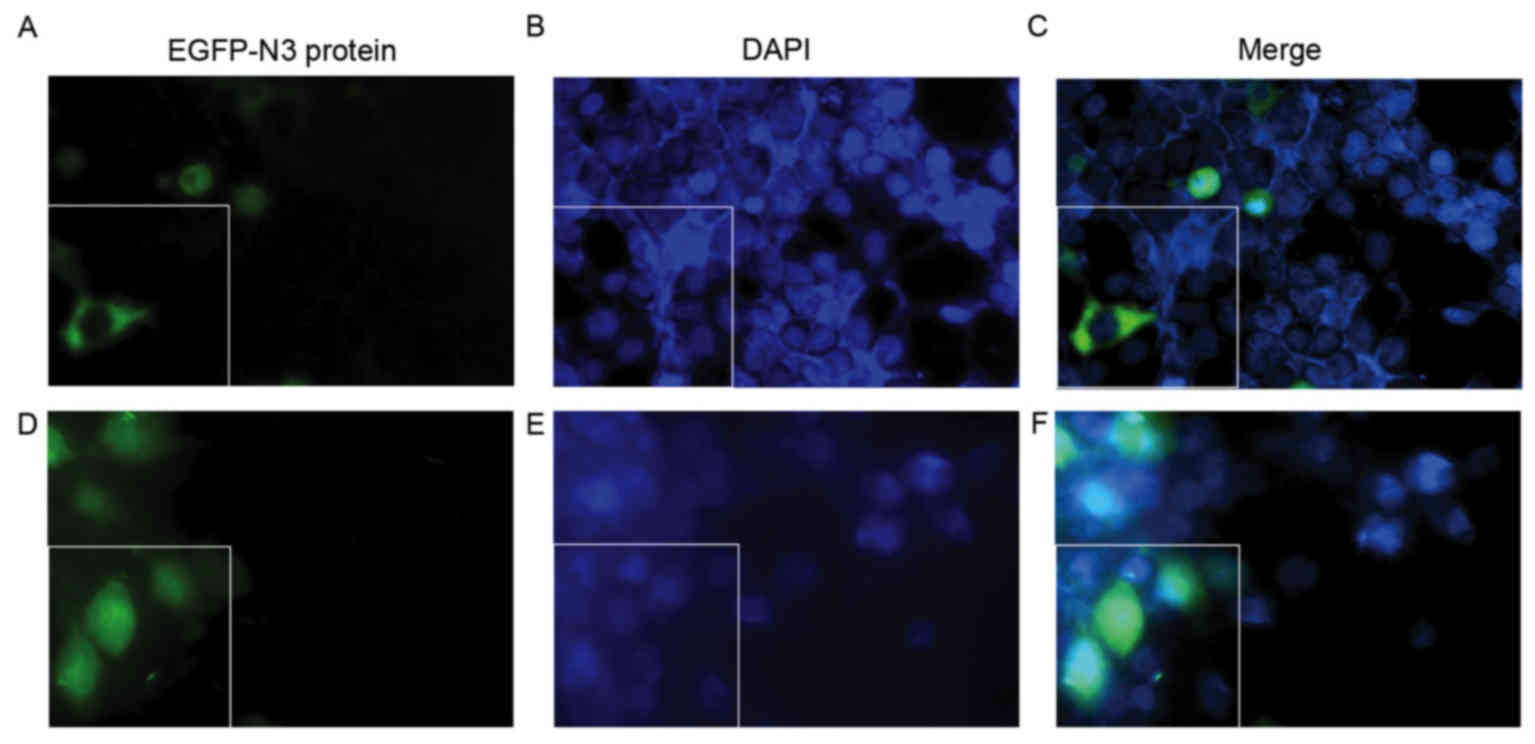|
1
|
Jafari M, Soltani M, Naahidi S,
Karunaratne DN and Chen P: Nonviral approach for targeted nucleic
acid delivery. Curr Med Chem. 19:197–208. 2012. View Article : Google Scholar : PubMed/NCBI
|
|
2
|
Dijkmans PA, Juffermans LJ, Musters RJ,
van Wamel A, ten Cate FJ, van Gilst W, Visser CA, de Jong N and
Kamp O: Microbubbles and ultrasound: From diagnosis to therapy. Eur
J Echocardiogr. 5:245–256. 2004. View Article : Google Scholar : PubMed/NCBI
|
|
3
|
Bouakaz A, Versluis M and de Jong N:
High-speed optical observations of contrast agent destruction.
Ultrasound Med Biol. 31:391–399. 2005. View Article : Google Scholar : PubMed/NCBI
|
|
4
|
De Jong N, Emmer M, van wamel A and
Versluis M: Ultrasonic characterization of ultrasound contrast
agents. Med Biol Eng Comput. 47:861–873. 2009. View Article : Google Scholar : PubMed/NCBI
|
|
5
|
Bekeredjian R, Chen S, Frenkel PA,
Grayburn PA and Shohet RV: Ultrasound-targeted microbubble
destruction can repeatedly direct highly specific plasmid
expression to the heart. Circulation. 108:1022–1026. 2003.
View Article : Google Scholar : PubMed/NCBI
|
|
6
|
Juffermans LJ, van Dijk A, Jongenelen CA,
Drukarch B, Reijerkerk A, de Vries HE, Kamp O and Musters RJ:
Ultrasound and microbubble-induced intra- and intercellular
bioeffects in primary endothelial cells. Ultrasound Med Biol.
35:1917–1927. 2009. View Article : Google Scholar : PubMed/NCBI
|
|
7
|
Miller AM, Munkonge FM, Alton EW and Dean
DA: Identification of protein cofactors necessary for
sequence-specific plasmid DNA nuclear import. Mol Ther.
17:1897–1903. 2009. View Article : Google Scholar : PubMed/NCBI
|
|
8
|
Zabner J, Fasbender AJ, Moninger T,
Poellinger KA and Welsh MJ: Cellular and molecular barriers to gene
transfer by a cationic lipid. J Biol Chem. 270:18997–19007. 1995.
View Article : Google Scholar : PubMed/NCBI
|
|
9
|
Young JL and Dean DA: Nonviral gene
transfer strategies for the vasculature. Microcirculation. 9:35–49.
2002. View Article : Google Scholar : PubMed/NCBI
|
|
10
|
Ma H, Zhu J, Maronski M, Kotzbauer PT, Lee
VM, Dichter MA and Diamond SL: Non-classical nuclear localization
signal peptides for high efficiency lipofection of primary neurons
and neuronal cell lines. Neuroscience. 112:1–5. 2002. View Article : Google Scholar : PubMed/NCBI
|
|
11
|
Klibanov AL: Targeted delivery of
gas-filled microspheres, contrast agents for ultrasound imaging.
Adv Drug Deliv Rev. 37:139–157. 1999. View Article : Google Scholar : PubMed/NCBI
|
|
12
|
Suzuki R, Takizawa T, Negishi Y, Hagisawa
K, Tanaka K, Sawamura K, Utoguchi N, Nishioka T and Maruyama K:
Gene delivery by combination of novel liposomal bubbles with
perfluoropropane and ultrasound. J Control Release. 117:130–136.
2007. View Article : Google Scholar : PubMed/NCBI
|
|
13
|
Suzuki R, Takizawa T, Negishi Y, Utoguchi
N, Sawamura K, Tanaka K, Namai E, Oda Y, Matsumura Y and Maruyama
K: Tumor specific ultrasound enhanced gene transfer in vivo with
novel liposomal bubbles. J Control Release. 125:137–144. 2008.
View Article : Google Scholar : PubMed/NCBI
|
|
14
|
Deng Q, Chen JL, Zhou Q, Hu B, Chen Q,
Huang J and Guo RQ: Ultrasound microbubbles combined with the NFκB
binding motif increase transfection efficiency by enhancing the
cytoplasmic and nuclear import of plasmid DNA. Mol Med Rep.
8:1439–1445. 2013. View Article : Google Scholar : PubMed/NCBI
|
|
15
|
Zhang L, Liu Y, Xiang G, Lv Q, Huang G,
Yang Y, Zhang Y, Song Y, Zhou H and Xie M: Ultrasound-triggered
microbubble destruction in combination with cationic lipid
microbubbles enhances gene delivery. J Huazhong Univ Sci Technolog
Med Sci. 31:39–45. 2011. View Article : Google Scholar : PubMed/NCBI
|
|
16
|
Yuan Y, Yan L, Wu QQ, Zhou H, Jin YG, Bian
ZY, Deng W, Yang Z, Shen DF, Zeng XF, et al: Mnk1
(mitogen-activated protein kinase-interacting kinase 1) deficiency
aggravates cardiac remodeling in mice. Hypertension. 68:1393–1399.
2016. View Article : Google Scholar : PubMed/NCBI
|
|
17
|
Pérez-Martínez FC, Guerra J, Posadas I and
Ceña V: Barriers to non-viral vector-mediated gene delivery in the
nervous system. Pharm Res. 28:1843–1858. 2011. View Article : Google Scholar : PubMed/NCBI
|
|
18
|
Mehier-Humbert S, Bettinger T, Yan F and
Guy RH: Plasma membrane poration induced by ultrasound exposure:
Implication for drug delivery. J Control Release. 104:213–222.
2005. View Article : Google Scholar : PubMed/NCBI
|
|
19
|
Wan C, Li F and Li H: Gene therapy for
ocular diseases meditated by ultrasound and microbubbles (Review).
Mol Med Rep. 12:4803–4814. 2015. View Article : Google Scholar : PubMed/NCBI
|
|
20
|
Newman CM and Bettinger T: Gene therapy
progress and prospects: Ultrasound for gene transfer. Gene Ther.
14:465–475. 2007. View Article : Google Scholar : PubMed/NCBI
|
|
21
|
Duvshani-Eshet M and Machluf M:
Therapeutic ultrasound optimization for gene delivery: A key factor
achieving nuclear DNA localization. J Control Release. 108:513–528.
2005. View Article : Google Scholar : PubMed/NCBI
|
|
22
|
Tsutsui JM, Xie F and Porter RT: The use
of microbubbles to target drug delivery. Cardiovasc Ultrasound.
2:232004. View Article : Google Scholar : PubMed/NCBI
|
|
23
|
Kimmelman J: Protection at the cutting
edge: The case for central review of human gene transfer research.
CMAJ. 169:781–782. 2003.PubMed/NCBI
|
|
24
|
Benimetskaya L, Guzzo-Pernell N, Liu ST,
Lai JC, Miller P and Stein CA: Protamine-fragment peptides fused to
an SV40 nuclear localization signal delivery oligonucleotides that
produce antisense effects in prostate and bladder carcinoma cells.
Bioconjug Chem. 13:177–178. 2002. View Article : Google Scholar : PubMed/NCBI
|
|
25
|
Imamoto N: Diversity in nucleocytoplasmic
transport pathways. Cell Struct Funct. 25:207–216. 2000. View Article : Google Scholar : PubMed/NCBI
|
|
26
|
Nakanishi M, Akuta T, Nagoshi E, Eguchi A,
Mizuguchi H and Senda T: Nuclear targeting of DNA. Eur J Phar Sci.
13:17–24. 2001. View Article : Google Scholar
|
|
27
|
Lange A, Mills RE, Lange CJ, Stewart M,
Devine SE and Corbett AH: Classical nuclear localization signals:
Definition, function, and interaction with importin alpha. J Biol
Chem. 282:5101–5105. 2007. View Article : Google Scholar : PubMed/NCBI
|
|
28
|
Nielsen PE, Egholm M, Berg RH and Buchardt
O: Sequence-selective recognition of DNA by strand displacement
with athymine-substituted polyamide. Science. 254:1497–1500. 1991.
View Article : Google Scholar : PubMed/NCBI
|
|
29
|
Zelphati O, Liang X, Nguyen C, Barlow S,
Sheng S, Shao Z and Felgner PL: PNA-dependent gene chemistry:
Stable coupling of peptides and oligonucleotides to plasmid DNA.
Biotechniques. 28:304–310. 2000.PubMed/NCBI
|
|
30
|
Munkonge FM, Amin V, Hyde SC, Green AM,
Pringle IA, Gill DR, Smith JW, Hooley RP, Xenariou S, Ward MA, et
al: Identification and functional characterization of cytoplasmic
determinants of plasmid DNA nuclear import. J Biol Chem.
284:26978–26987. 2009. View Article : Google Scholar : PubMed/NCBI
|



